A beautiful, classic sporter gets a high-tech upgrade
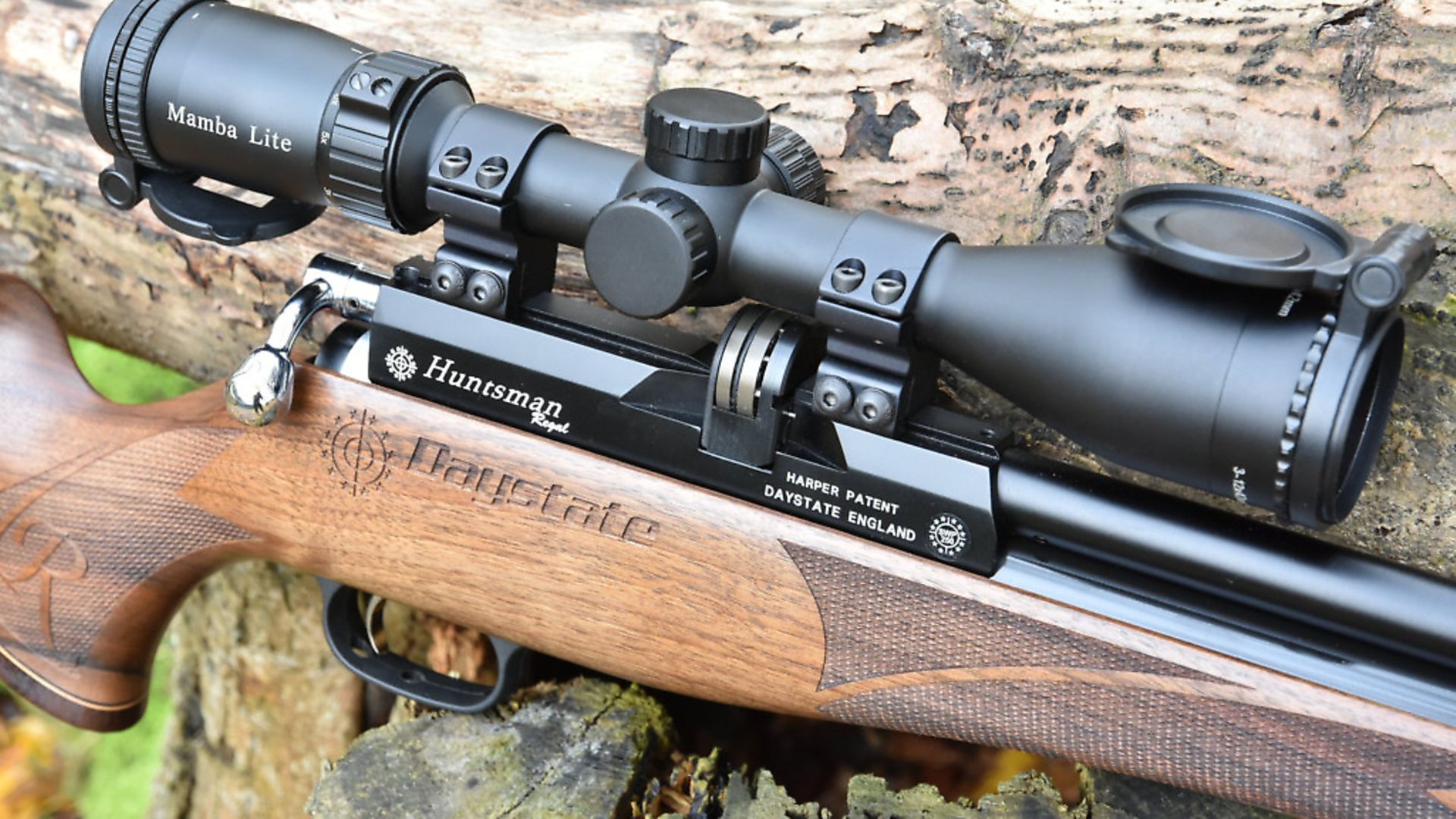 credit: Archant
credit: Archant
This month’s big test is an unusual opportunity to report on not only a new version of one of my favourite guns of all time, but also to look at a recent trend that’s swept across the air rifle manufacturing industry. I know that I’m in a minority, but I feel strongly that the Huntsman Regal is the finest airgun Daystate ever made. It might be modest, and by their standards understated, but for the skilled and dedicated airgun hunter it has every attribute you could wish for.
It makes all the power we need, both at legal limit and at higher power for those who hold a firearm certificate. It’s as accurate as you could ever want, and my own high-power version is one of the most accurate guns I’ve ever tested at long range in my 40 years of shooting airguns. On top of this, it’s an ergonomic tour de force, with superb handling. Its modest proportions and conventional layout means that it slips into your shoulder and comes on aim as naturally as pointing your finger at your quarry. Much of this comes down to the stock that was designed by a Belgian shotgun stock designer who came up with a balance and fit that simply works with the human form, rather than against it. I own two Huntsman Regals: a .177 at 11 ft.lbs and another at 29 ft.lbs. in .22, so it’s fair to say that I know this rifle well.
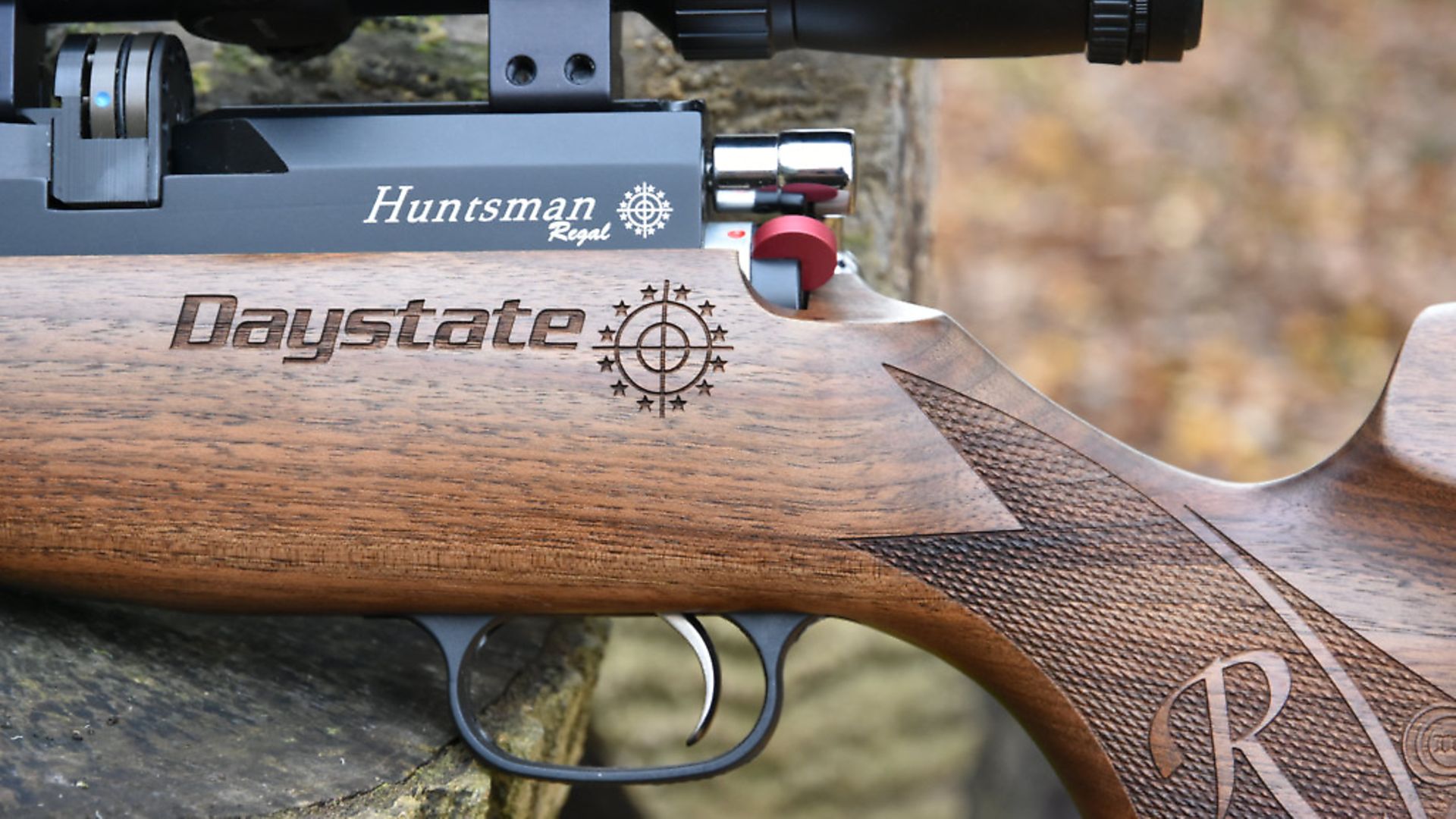 credit: Archant
credit: Archant
Proper stock fit
This rifle belongs in an increasingly rare club of dedicated right-handed guns. Today, almost all new rifles are ambidextrous, which is another word for ‘compromised’. The day we begin to wear ambidextrous shoes, I’ll accept that there’s no need to make equipment to fit us properly. The Huntsman Regal’s stock fills my trigger hand with a delightful shape and a palm swell that ensures full contact and support without the need for any pressure. It delivers the pad of my index finger precisely to the blade for maximum control, which rewards with ultimate accuracy. Proper stock fit makes a huge difference to handling, of that I have no doubt.
Among its many fine attributes I particularly love the trigger unit which can be tuned to deliver proper sporting performance. I like a crisp and clean 2lbs break that’s as useable in winter wearing gloves as it is midsummer with a bare hand, and my guns are set just that way. The performance of the trigger is a huge influence on accuracy and shot delivery and one of the most important reasons to buy a high-quality rifle.
A match-grade Lothar Walther barrel lives inside an anodised shroud to initiate noise suppression, after which my chosen carbon-fibre, reflex silencer completes the job. Like most airgunners I’ve asked, I love a noiseless rifle and the rifle on test was whisper quiet. The safety mechanism is simple and robust, but its lever is the only part of the rifle I feel needs improvement. Sure, it’s totally practical, and can be felt positively with a gloved hand, but just doesn’t look right on such a stylish gun. My early models had a translucent plastic tab, whilst the current ones display a red anodised one.
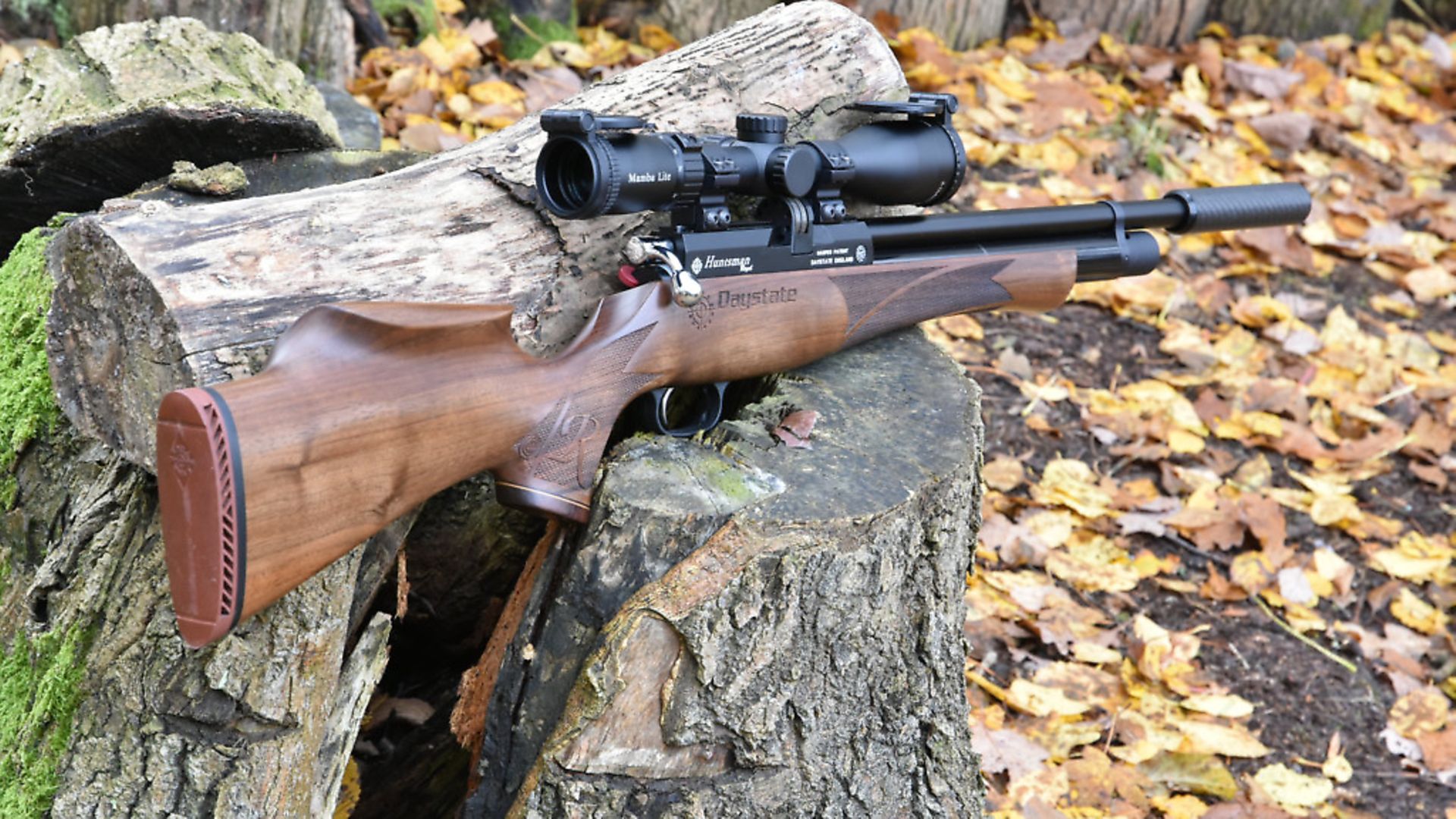 credit: Archant
credit: Archant
Regulator complexity
I feel confident that you’ve understood by now that I’m a fan, so when I heard that Daystate had a new version, I was immediately interested. The rumour mill has had it that a replacement for the Huntsman had been on the drawing board for some time, but the factory has been tight lipped about that subject. Pressed hard on that matter, the sales director said, “Don’t hold your breath,” and “Not happening any time soon and you can count that in years, not months!”
This is where I become conflicted because the old adage of ‘if it ain’t broken, don’t fix it’ comes to mind, even though I’m a great believer in the progress of development. Could Daystate really improve my beloved Huntsman? What they chose to do was to add a Huma regulator to the pre-charged pneumatic (PCP) engine that drives the rifle. The short explanation – a regulator is a chamber that accepts and holds a precise volume and pressure of air from the main reservoir ready for the shot. This clever mechanism stays constant right across the consumption of the reservoir’s fill, from maximum to minimum, and eliminates the notorious ‘power curve’ that affects muzzle velocity. A regulator can also increase the number of shots per fill, which makes some people very happy. The downsides are that they add complexity to a simple rifle design and that adds cost, and the fear of a failure. I’ve never felt the need for one, but it seems that the airgun press globally is clamouring for them and that might be a clue to their popularity.
In many countries around the world there are no power restrictions on airguns and in high-power applications, a regulator makes good sense. High-power guns are greedy for air, so any benefit to efficiency has to be welcomed. Further, the power curve can become very exaggerated when you’re launching a 53 grain .303 pellet at 850 fps. The question is, does that matter to the average Brit shooting a sub 12 ft.lbs. rifle? I wasn’t sure, so some serious range time was required.
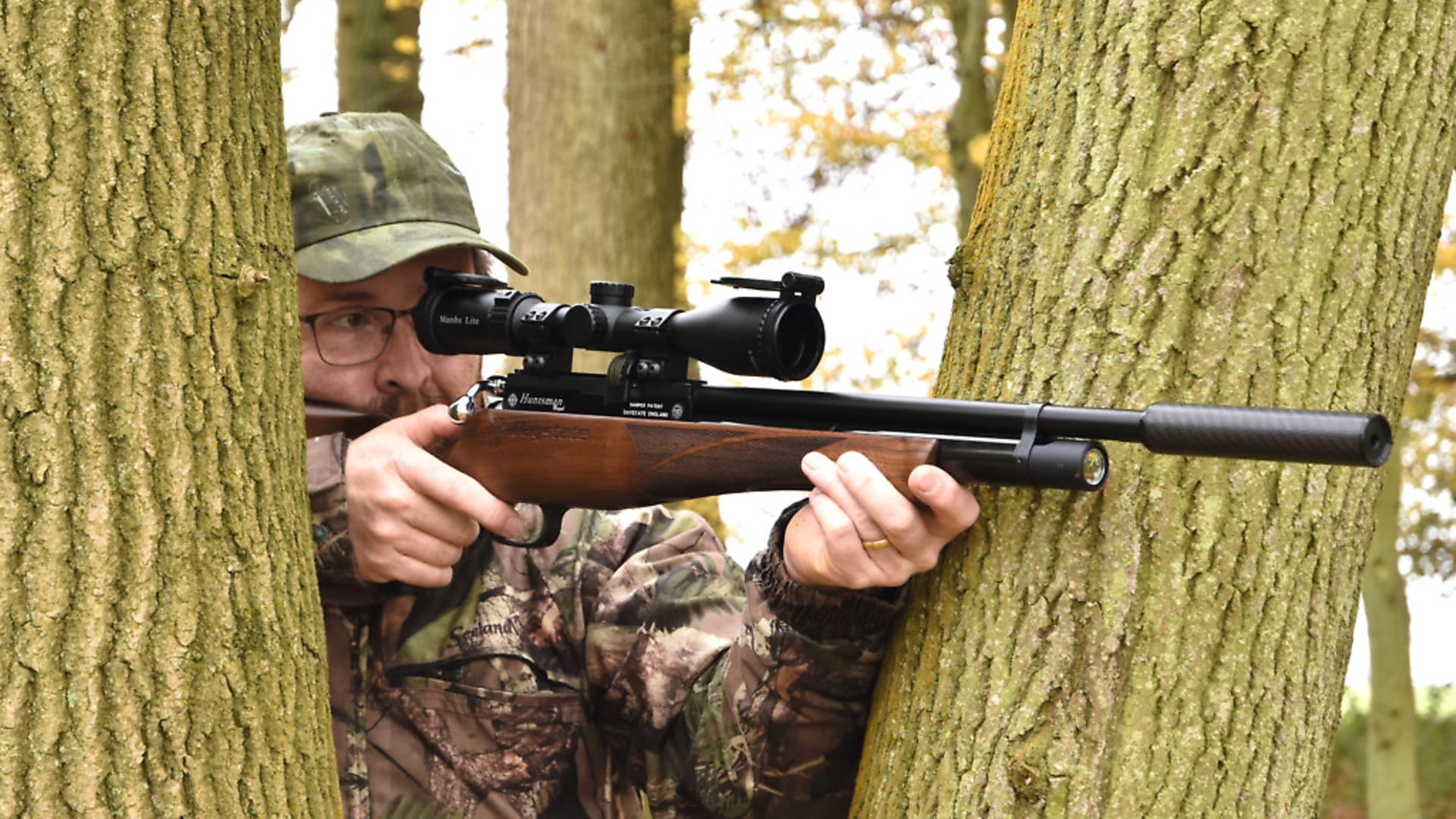 credit: Archant
credit: Archant
Harper slingshot
For those who don’t know the Huntsman Regal, it’s a very conventional barrel over reservoir, pre-charged pneumatic, that in most senses is about as simple as it gets. However, inside it contains the Harper Slingshot hammer design which is a stunningly elegant answer to a tricky problem. When the hammer strikes the valve on a conventional PCP, it opens the valve and lets the compressed air through to power your pellet. In the milliseconds after, it also bounces back and forth, worthlessly opening the valve tint increments and wasting air. The Harper system eliminates this bounce, delivering far greater efficiency from a simple and robust mechanism. I can’t stand unreliable kit, so the Harper system appeals to me. Getting to a shooting ground only to be let down by my rifle is not something I’ll ever endure again.
A regulated rifle has two pressure gauges; one tells you the remaining pressure in your reservoir, whilst the other reports on the regulator pressure. As the rifle is being built, the technician tunes the reg’ pressure to deliver the performance required, namely the sub 12 ft.lbs. we need to stay on the right of UK law. It’s in the nature of production tolerances that each gun needs to be tweaked, just so, to deliver what we need. Regulators are complex and made to very precise dimensions, which means that they’re expensive, of course. You won’t buy a Rolex for Casio money, right? I’m not a fan of looking at gauges on the side of a rifle, let alone looking at two, so I applaud Daystate for their clever solution with the regulated Huntsman. The reservoir pressure gauge has been moved to the front of the reservoir towards the muzzle. Now, not everybody is comfortable with this because you need to point the muzzle toward your face to read the gauge, but let’s be serious. If you can’t read it without pointing the gun at your face you need to have a good long chat with yourself about growing up. The second gauge which reads the regulator pressure is in the belly of the stock and is invisible from the side.
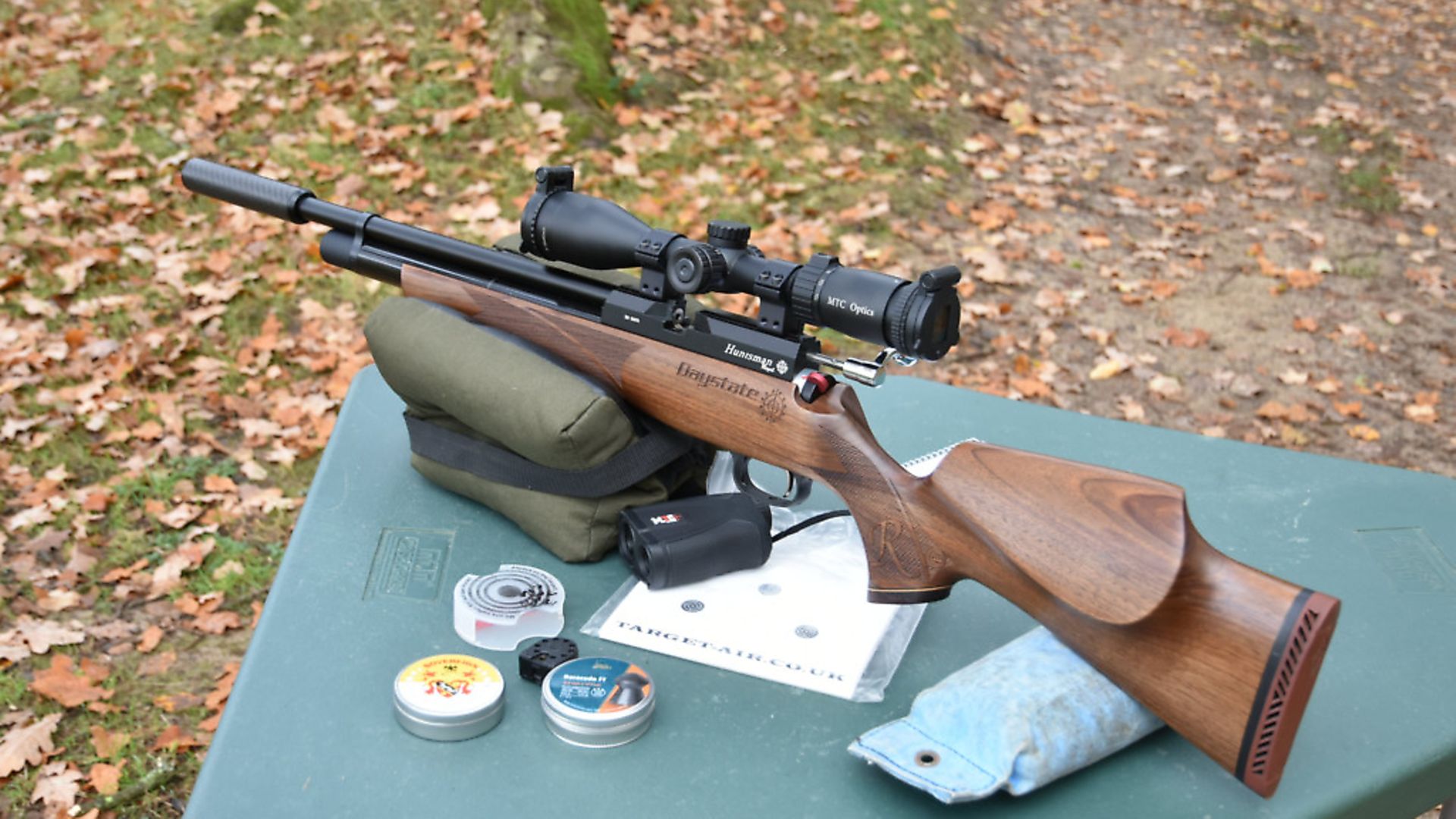 credit: Archant
credit: Archant
Perspective
Another change needed to accept this new system was a method of filling the reservoir. I’ve always enjoyed the tough, industrial Foster connectors the Huntsman fed from. To allow the relocation of the reservoir pressure gauge to the front, Daystate had to adopt the ‘probe and port’ type of filler behind the gauge. Even though it’s not my favourite, I have a number of rifles that use that system, and with some basic common sense, it need be no drawback at all. Keep it clean, is all I’ll say on the matter. Around the female part of the system is an aluminium collar that’s held in place with ‘O’ rings that on my test gun didn’t have the strongest of holds.
So, with an understanding of the differences between regulated and non-regulated guns, what does the extra £100 and complexity get you? With my .177 test gun, I was able to get 140 precise shots from the regulated action as compared to 82 shots from my own, non-regulated model. Impressed, eh? If you like to sit and shoot all day, 140 shots between fills looks great. If you’re a hunter, please tell me how many times 82 shots weren’t enough. It’s a matter of perspective. What do YOU want from your rifle?
The new model utilises the standard 10-shot magazine that I know well. With some basic maintenance, they’ve served me for much of my hunting needs for close to 10 years, and as long as you keep them clean and apply some suitable lubrication now and then, they work well. The rifle is supplied with a single-shot tray for those who prefer to load pellets manually, and there’s some anecdotal evidence that you might squeeze a small amount of accuracy improvement by using it. My guns are equally accurate with the mag’ or tray, but others have told me of different results.
Clover-leaf groups
At the test range I topped up the reservoir to the prescribed 230bar, loaded the magazine with Daystate Sovereign .177 pellets and watched tiny, clover-leaf groups appear at 35 yards just as I’d expected. It was an easy gun to shoot, with only the smallest nudge of recoil and a little spring resonance to advise you that the shot had departed. At 50 yards the groups had opened to around ¾”, which is more a demonstration of what the wind does to a pellet’s flight than a reflection on the rifle’s performance.
The chronograph showed that the 8.44 grain pellet was averaging 782 fps for a muzzle energy of 11.42 ft.lbs. with a shot-to-shot velocity variation of 12fps over 80 shots. You might wonder why I chose 80 shots as my test sample, so I’ll tell you why. I was so bored with standing in front of the chrono’ I gave up. The performance was there to see, and that was all I needed to know.
My conclusion about the benefits of a regulated Huntsman Regal over the older model is that I’d happily shoot either. If you have an extra £100 in your budget and value more shots per fill, then by all means buy the Huma regulated version. However, don’t think you’ll be disappointed by the non-regulated version if you’d like to save the money. Both guns are superb hunters and cling to the values of fine fit and handling in a big, bulky, ambidextrous world. Long may this fine rifle and its kind survive to satisfy the skilled airgun hunter who values real-world performance over fashion.
Specification
Manufacturer: Daystate
Web: daystate.com
Tel: 01785 859122
Model: Huntsman Regal HR
Type: Pre-charged pneumatic
Action: Magazine-fed, bolt-action
Length: 37 1/4” (95cm)
Weight: 6.2lbs (2.8kg)
Trigger: Two-stage, adjustable
Fill pressure: 230bar
Shots per fill:
.177 140
.22 160
RRP: £899 (silencer £75)
__________________________________________________
Read more gun tests...
Daystate Huntsman Regal
Daystate Wolverine R Hilite
Daystate Red Wolf